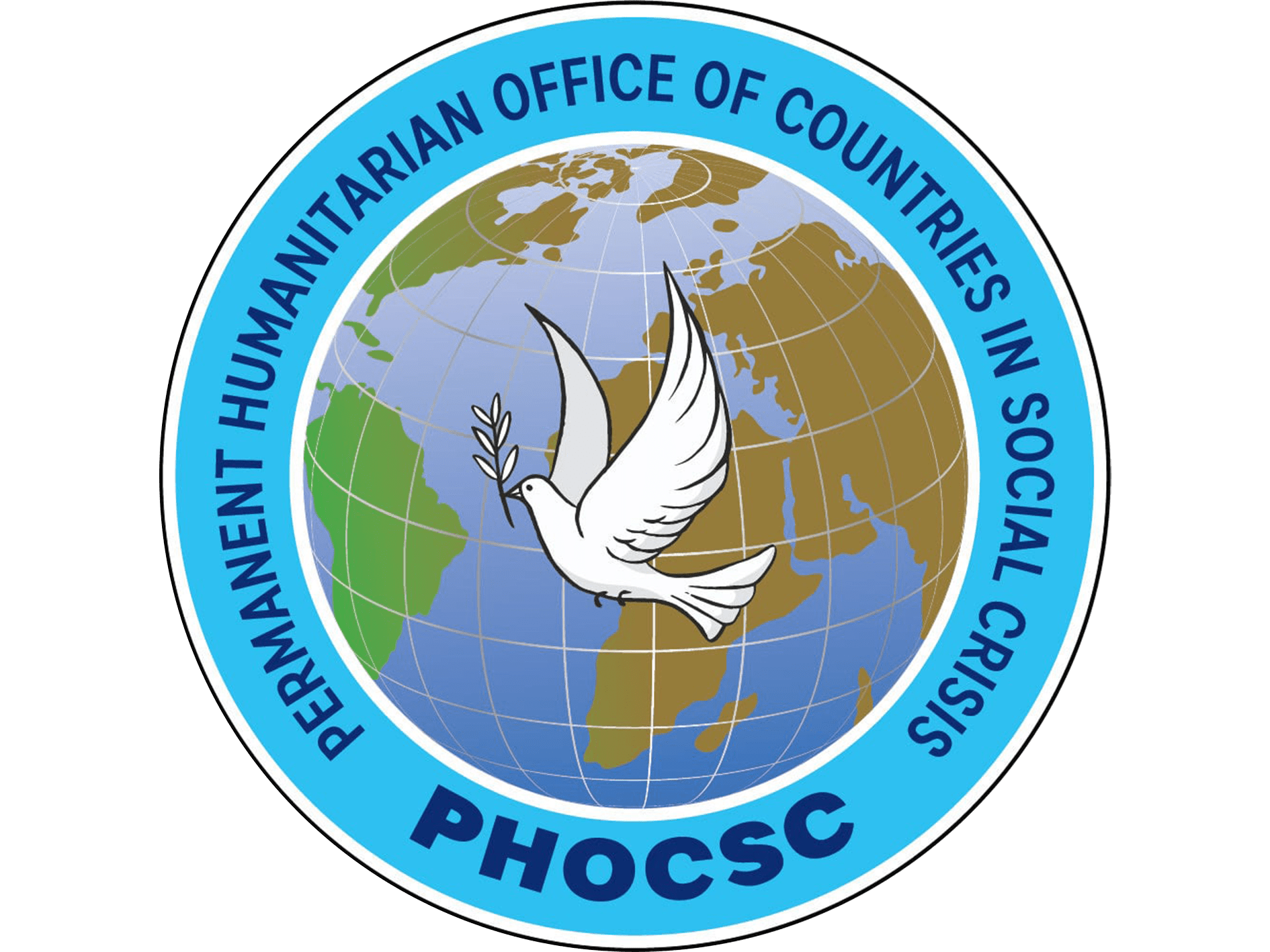- Home
- Blog
Blog
Life Style
Geography of Despair in Humanitarian Crises
The Geography of Despair: How Humanitarian Crises Worsen Depending on Where You Are Born When we talk about humanitarian crises, we often think first of war, displacement, or poverty. But an equally powerful factor in determining how severe a crisis becomes is geography — where people live, whether in remote regions, climate-vulnerable zones, or conflict-prone territories. At PHOCSC, we understand that geography shapes human suffering, and we focus our interventions where the terrain itself is part of the challenge. Below, we explore how geography deepens vulnerability — and why responding in these places is urgent. Climate Extremes as a Risk Multiplier Climate hazards do more than destroy infrastructure: they amplify preexisting vulnerabilities. According to UN data, millions of people displaced by conflict now live in countries with high to extreme exposure to climate-related hazards. In the Horn of Africa, for example, prolonged droughts have affected tens of millions of people. This kind of stress not only reduces food production but triggers migration, destabilizes livelihoods, and forces communities into cycles of repeated displacement. In places where people have few resources, such environmental shocks can be catastrophic — not a single disaster, but a repeated punishment. Water Scarcity, Conflict, and Tensions Water stress is increasingly entangled with conflict. According to the United Nations World Water Development Report, 2.2 billion people globally still lack safely managed drinking water, and 3.5 billion lack safely managed sanitation. In many regions, this scarcity fuels competition and conflict. When water is not just limited, but contested, it becomes not just a resource — but a flashpoint. Some communities are trapped in dangerous geographies: no river access, degraded aquifers, or polluted supply lines, making humanitarian response more complicated. These dynamics mean that people born in certain places — arid zones, border regions, or contested territories — face a dramatically higher risk. For them, access to water is not a “nice to have”; it is a matter of survival and power. Isolation and Inaccessibility Beyond climate, simple physical geography can make life more dangerous. Remote, mountainous, or otherwise isolated communities suffer from limited infrastructure and fewer development options. When crisis hits, the isolation becomes a barrier for aid delivery. UNHCR’s 2025 Global Appeal reports that many of the most vulnerable and displaced people are in countries with protracted conflict and very limited infrastructure. In places where roads are damaged or non-existent, humanitarian organizations may struggle to reach those who need help most. This isolation is often structural: poor road access, lack of reliable transport, seasonal flooding, or rugged terrain can turn a region into a “geographic blind spot” in international responses. Conflict, Displacement, and Repeated Crises Geography also intersects with conflict in powerful ways. According to the United Nations, the climate crisis makes it harder for people to return home after being displaced. Conflict-affected populations are increasingly stuck in dangerous areas: forced to flee due to violence, but unable to rebuild because climate risks make their regions uninhabitable or dangerous. For example, by mid-2025, many refugee settlements are located in zones projected to face between 200 and 200+ days of hazardous heat stress per year by 2050. In short, geography becomes a trap: violence forces people out, and environmental pressures prevent them from returning. Why PHOCSC Prioritizes Hard-to-Reach Geographies At PHOCSC, our strategy is informed by this geographic reality. We do not just respond to what’s visible on the news — we go where the terrain, the climate, and the risk multiply suffering in ways that are often overlooked. Targeted intervention: We focus on areas exposed to climate-conflict risk, where traditional aid may not be enough. Building resilience: Beyond emergency response, we support infrastructure, water access, and sustainable livelihoods so that communities can withstand repeated shocks. Partnerships with local actors: In remote or insecure regions, local partnerships are essential. We collaborate with grassroots organizations, community leaders, and local governments to deliver effective, context-sensitive aid. The Urgent Need for Support The geography of despair is not a distant concept — it is real, measurable, and growing. According to UN Water’s most recent report, food crises are being driven by a dangerous mix of climate extremes and conflict. Without a targeted, geography-aware response, millions will remain trapped in zones where aid is hardest to deliver. PHOCSC’s mission is to bridge that gap. But we cannot do it alone. The complexity of these geographic dynamics demands sustained funding, strategic partnerships, and immediate humanitarian action. Where you are born should not determine whether you survive a crisis — but geography often ensures that it does. At PHOCSC, we understand that the most vulnerable communities are not always the most visible. That’s why we prioritize regions where climate stress, conflict, and isolation converge to trap people in a cycle of suffering. If you believe in humanitarian action that reaches beyond the headlines, partner with PHOCSC. Support our mission to deliver aid, build resilience, and restore dignity in places that many have forgotten — but that we refuse to ignore.
Read MoreNovember 28, 2025
Life Style
Silent Crises: Countries Facing Emergencies
In the world of humanitarian aid, certain situations capture headlines and donations, while others—despite their severity—remain in the background. At the Permanent Humanitarian Office of Countries in Social Crises (PHOCSC), we believe that no humanitarian crisis deserves to be ignored. This article seeks to highlight urgent realities in which the words “forgotten” or “ignored” appear too frequently, and to show why and how we should act. Yemen: A Long-Term Crisis That Continues to Worsen The war that began in Yemen in 2014 led to what the UN itself describes as one of the worst humanitarian crises in the world. By 2025, nearly 20 million people will depend on humanitarian aid for survival, and around 4.8 million people remain internally displaced. The United Nations in Yemen The deadly combination of armed conflict, import blockades, destruction of health infrastructure, and disease outbreaks creates a perfect storm. Despite this, media coverage and international funding have not reached levels proportional to the disaster the population is experiencing. Why is it going unnoticed? Humanitarian organizations are increasingly struggling to operate: detentions of staff, confiscation of equipment, and severe restrictions create operational and information gaps. Other more recent or media-heavy crises compete for international attention, leaving little room for longer-term scenarios like Yemen. What is the urgent shift? While the emergency is chronic, every month without adequate aid worsens basic living conditions: access to healthcare, sanitation, nutrition, and safe housing. Acting now is not only humanitarian but also strategic to prevent the crisis from becoming catastrophic. Central African Republic (CAR): The little-publicized war and its silent effects In the Central African Republic, armed conflict, internal displacement, climate crisis, and institutional fragility are intertwined. By 2025, an estimated 2.4 million people—approximately 38% of the population—will require humanitarian assistance. According to an analysis by the World Food Programme (WFP), more than 2.3 million people (35% of the population) will face acute food insecurity between April and August 2025. Furthermore, thousands of women and girls who are survivors of sexual violence or internal displacement are left without access to reproductive health services. Why does it go unnoticed? It is a country without major geostrategic interests or global media resources. Threats and displacement occur in remote areas, complicating visibility and media coverage. Despite its magnitude, international funding falls far short of needs. Why does it require attention now? Prolonged inaction can trigger hunger, further mass displacement, and the collapse of basic health and education systems. Intervening now can make the difference between a serious crisis and a humanitarian catastrophe. Haiti: “Forgotten” but in the midst of an emergency Haiti is at a crossroads: urban violence, the collapse of basic services, mass displacement, and acute hunger. By 2025, an estimated 1.3 million people are expected to be internally displaced, a 24% increase from December 2024. Regarding food security, more than 5.7 million people—more than half the country's population—face acute food insecurity. Of these, 2.1 million are at emergency levels (IPC Phase Furthermore, more than half a million children are displaced, representing approximately one in eight children in the country. Why is its international visibility diminishing? The persistence of the crisis means that the media spotlight diminishes over time. The combination of gang violence, poor governance, and economic degradation does not generate "new images" that capture sustained global attention. Humanitarian funding is insufficient: for example, only 8% of the humanitarian response plan was funded at one stage of the year. What happens if we don't act now? Deteriorating conditions could turn into a humanitarian collapse: widespread hunger, continued displacement, reduced access to health and education, increased gender-based violence, and a generation of children without schooling or opportunities. What role can PHOCSC play? As an organization committed to providing essential solutions to people and communities experiencing social crisis, PHOCSC can make a difference in these invisible scenarios through: Direct support to affected communities in the aforementioned countries, as well as in others experiencing similar crises, through housing, healthcare, education, and community development. Collaboration with local and international organizations to ensure that aid reaches those most in need. Dissemination and awareness-raising about these "forgotten" crises to mobilize resources, volunteering, and media visibility. Establishing strategic alliances to complement emergency services with sustainable development. Urgent need for intervention Now is the time to intensify support. Every day without adequate action worsens basic living conditions: greater hunger, more displaced people, and less access to essential services. The aforementioned crises are not "distant," but rather part of the same interconnected world to which we belong. "Hidden" humanitarian crises are no less serious than those that receive media attention. Quite the contrary: they are often protracted, complex, and face additional barriers to access, funding, and visibility. At PHOCSC, we reaffirm our commitment to those living in crisis environments ignored by many. Because every person, every community, deserves dignified conditions to live, develop, and thrive. If you are looking to partner with an organization that acts with urgency, commitment, and transparency in forgotten settings, we invite you to connect with PHOCSC. Together, we can bring light, hope, and real solutions to those in need.
Read MoreOctober 23, 2025
Social Crises and Climate Change
The Perfect Storm Hitting Vulnerable Communities At PHOCSC, we work to ensure that people and communities have access to essential solutions under appropriate humanitarian conditions. Today, we want to share an integrated view of how climate change is intensifying social crises and why linking the humanitarian and environmental agendas is not optional, but essential to protect those most in need. What we mean by the “perfect storm”? The term “perfect storm” describes a confluence of factors that, together, exacerbate people's vulnerability. In the current context, this storm consists of: Prolonged droughts that deplete critical resources such as water and fertile soil. Intense flash floods that destroy homes, infrastructure, and livelihoods. Extreme weather events (hurricanes, storms, heat waves) that cause massive damage in a short period of time. Forced displacement and conflicts over resources are increasingly common in affected regions. Social cohesion is weakened when communities lose access to basic services such as health, education, and employment. These dynamics do not act in isolation. Each climate event amplifies existing crises: poverty, inequality, the vulnerability of women and girls, indigenous populations, and communities in urban or rural areas with fewer opportunities. Instead of viewing the humanitarian crisis and the climate crisis as separate issues, we must understand them as intertwined responses to the same system: our planet and the societies that inhabit it. How climate change exacerbates humanitarian crises Water and food security at stake More intense droughts reduce the availability of water for consumption, hygiene, and cultivation, increasing the risk of malnutrition and disease. Droughts also weaken food production, increasing prices and depriving families of adequate nutrition, which in turn sustains chains of vulnerability that are passed on between generations. In contexts of conflict or economic instability, competition for water and food resources becomes a source of tension and displacement. Floods and Property Losses Torrential rains and floods destroy homes, schools, and clinics, and in the short term, negate communities' ability to generate income. Rain and runoff cause waterborne diseases, with a disproportionate impact on children, older adults, and people with disabilities. Reconstruction is often slow, frequent, and expensive, forcing families into debt or to migrate due to a lack of opportunities. Extreme Events and Mental Health Heat waves and violent storms worsen physical and mental health conditions, increasing the burden on already fragile health systems. The trauma of losing homes, jobs, or loved ones, coupled with future uncertainty, generates chronic stress and emotional distress in entire communities. Displacement and Social Cohesion The combination of drought, flooding, and resource-related violence can force internal or cross-border migration. Displacement disrupts access to education, healthcare, and employment opportunities, creating cycles of vulnerability that are difficult to break without structural support. A framework that connects people to action. At PHOCSC, we believe that the response must be holistic and rights-based. This involves not only providing immediate assistance in crisis situations, but also strengthening the resilience of communities to face the next year, the next winter, or a new drought season. Some strategic lines that articulate this approach are: Resilient Housing and Sanitation: Prioritize housing that can withstand extreme weather conditions and has access to adequate water, sanitation, and hygiene. This reduces the exposure of vulnerable families to weather events and associated diseases. Health and Primary Care: Ensure continuous access to medical services, essential medicines, and mental health programs for communities affected by disasters and displacement. Water, Hygiene, and Sanitation: Invest in rainwater harvesting, water treatment, and hygiene distribution systems to reduce waterborne diseases and increase water security. Education and Community Development: Provide educational support for children and youth, with a focus on distance learning when necessary and skills development that facilitates local income generation. Protection and Advocacy: Work with communities to identify needs, reduce risks of violence and discrimination, and facilitate participation in decisions that affect their daily lives. Risk Management and Impact Reduction: Community planning that incorporates climate monitoring, emergency plans, and local capacities for rapid response and coordination with humanitarian actors. How we turn the climate crisis into an opportunity for change Climate and development approach: We design interventions that not only alleviate the emergency situation but also strengthen long-term resilience to future climate shocks. Equitable access to resources: We promote the inclusion of vulnerable groups in decision-making to ensure that solutions reach those most in need. Partnerships and international dissemination: We work with national and international partners to expand the dissemination of good practices, mobilize resources, and present evidence of impact. Environmental education and community engagement: We empower communities to understand and manage climate risks, promoting sustainable and culturally appropriate local solutions. Community-based adaptation: We prioritize solutions that respect cultural diversity and the specificities of each region, from adequate roofs and housing to sustainable farming practices. What every individual and organization can do: Support with donations directed to programs that integrate humanitarian response and climate action (housing, health, water, and education). Share knowledge and experiences to enrich community resilience approaches and peer learning. Involve local communities in project design and implementation to ensure relevance and sustainability. Promote public policies that integrate human security and climate action, protecting the most vulnerable groups. A Call to Action to Really Move Forward Climate change is not a distant problem; it is already affecting people now. At PHOCSC, our mission is to ensure that affected communities receive adequate assistance, while working to reduce their exposure to future climate risks. This requires the participation of donors, communities, governments, and civil society. If you share our vision, we invite you to: Explore opportunities to support projects that combine humanitarian response and climate adaptation on our website: https://phocsc.org/ Share this article to raise awareness about the interconnectedness between social and climate crises. Participate in local community-based resilience initiatives or human rights and climate advocacy campaigns. Social crises and climate change should not be seen as two separate problems awaiting different solutions. They are two sides of the same coin: vulnerable communities that need protection, support, and opportunities to rebuild and thrive in the face of increasingly intense impacts. By aligning the humanitarian and environmental agendas, we can reach more people, more efficiently, and with greater dignity, and build a more just and resilient society for the future that is already here. If you would like more information, collaboration ideas, or examples of projects in different regions, please contact us through our website. At PHOCSC, we work to ensure that the storm does not determine people's fate: that it is possible to rebuild, learn, and grow, even in the face of the climate crisis.
Read MoreSeptember 29, 2025
Intervention Models That Actually Works
Housing in Crisis: Intervention Models That Actually Work in Humanitarian Contexts Housing represents one of the fundamental rights and is key to the recovery and stability of communities affected by humanitarian crises. However, in emergency settings, housing responses require specific approaches tailored to needs and available resources. Below, we present a clear and practical guide to the main housing intervention models in crisis contexts, their adequacy criteria, typical costs, and how to measure their success. Emergency Shelters Definition: Temporary facilities designed to house displaced or extremely vulnerable people, providing immediate shelter and basic health and safety conditions. When to use them? In the early stages of a crisis, when communities face mass displacement or the total destruction of their homes. Suitability Criteria: Urgent need for shelter Limited resources for medium- and long-term solutions Available and safe spaces for rapid deployment Typical Costs and Resources: High daily costs per person, including logistics, transportation, and personnel. Necessary Resources: Prefabricated structures, support staff, basic supplies (water, food, hygiene). Success Indicators: Establishment Time Number of people housed Sanitary conditions and safety of the shelter Temporary Housing (Shelters or Prefabricated Houses) Definition: These are structures that serve as temporary accommodation for extended periods, designed to offer greater comfort and protection than emergency shelter. When to Use Them? When the emergency situation requires a housing solution that lasts for months, but reconstruction or reestablishment of permanent housing has not yet been achieved. Suitability Criteria: Availability of space and resources for installation Need for protection against adverse weather conditions Community prepared to manage temporary solutions Typical Costs and Resources: Moderate costs, with investment in structure, furniture, and basic services Required Resources: prefabricated modules, water and electricity services, construction materials Success Indicators: Installation time Inhabitant satisfaction Condition of structures after prolonged use Rental Support (Subsidies and Rent Payment Programs) Definition: This is a model that facilitates access to existing housing for families in crisis through subsidies or financial assistance to pay rent in the local market. When to use it? When communities have access to housing in adequate conditions and the main challenge is the economic capacity to afford it. Adequacy criteria: Rental market availability Families' ability to manage payments Need for long-term stabilization Typical costs and resources: Costs vary depending on the number of beneficiaries Resources: Subsidy funds, payment mechanisms, monitoring, and evaluation Success indicators: Number of families stabilized in housing Reduction in displacement or recurrent displacement Sustainability of long-term support Housing Improvement Kits Definition: Packages of materials and tools designed to improve the structure, safety, and sanitary conditions of existing housing, promoting sustainable recovery. When to use them? In communities that still have partially damaged or substandard housing, and where housing recovery can be self-sustaining with technical support. Adequacy criteria: Existence of homes with moderate damage Families' capacity to make improvements Resources available for technical training Typical costs and resources: Relatively low costs per kit Required resources: construction materials, manuals, technical personnel for training Success indicators: Improvements in structural conditions Increased safety and health Active community participation Myths and Realities in Housing Intervention in Crisis Settings “Only emergency shelters are needed”: It is important to combine temporary and long-term solutions. “Temporary housing is a permanent solution”: It is useful in the short and medium term, but must be complemented with sustainable housing plans. “Rental subsidies encourage dependency”: They can be effective in stabilizing communities if managed with clear and sustainable criteria. “Improving existing housing is always cheaper”: It depends on the level of damage and the scale of the project; in some cases, building new ones may be more efficient. Each housing intervention model has its ideal timing and context. The key to success in humanitarian contexts lies in assessing specific needs, available resources, and long-term objectives, combining temporary solutions with sustainable strategies. Implementing appropriate and adapted models guarantees not only shelter, but also dignity and the opportunity for recovery for affected communities. For more information and resources on crisis housing interventions, visit our website https://phocsc.org/ Do you have questions or want to collaborate on crisis housing projects? Contact us and together we can build effective solutions.
Read MoreAugust 25, 2025
Life Style
How to Promote Microenterprises for Self-Reliance
Local Economies in Crisis: How to Promote Microenterprises for Self-Reliance Practical Ideas to Boost Entrepreneurship That Helps Communities Move Forward In an increasingly interconnected world, communities facing social and economic crises require sustainable solutions adapted to their realities. The recovery and development of local economies are essential to strengthening community self-reliance and reducing dependence on external aid. In this article, we will explore innovative and practical ideas that can boost microenterprises, promoting the resilience and long-term well-being of communities in crisis. Participatory Assessment Adapted to Local Needs Before designing any initiative, it is vital to conduct a participatory assessment that involves community members themselves. This allows for the identification of existing skills, available resources, and specific gaps, avoiding generic proposals that do not respond to local realities. Active collaboration fosters a sense of belonging and commitment to projects. Promote the circular economy and the use of local resources Communities in crisis often have underutilized or poorly managed resources. Promoting micro-enterprises that reuse materials, such as the production of handcrafted products from local waste or urban agriculture, can generate income and reduce expenses. The circular economy is not only environmentally friendly but also creates business opportunities based on sustainability and social innovation. Training and development in practical and digital skills Investing in technical and digital skills training allows entrepreneurs to adapt to broader markets and improve the quality of their products or services. Workshops on entrepreneurship, business management, and digital marketing can be facilitated in collaboration with NGOs, educational institutions, and government actors. Digitalization, in particular, opens doors to online sales and access to real-time information. Support and cooperation networks among micro-entrepreneurs Promoting the creation of local networks of micro-entrepreneurs strengthens the community economy. These networks can share resources, knowledge, and distribution channels, reduce costs, and increase the visibility of their products. Solidarity-based cooperation also helps overcome common challenges and build a collective identity that attracts external support. Access to Adapted Financing and Solidarity-Based Microcredit Providing accessible financing tailored to the capabilities of communities in crisis is key. Microfinance, revolving funds, and crowdfunding mechanisms can be effective instruments if managed with transparency and technical support. Furthermore, promoting solidarity-based microcredit models fosters shared responsibility and economic empowerment. Integration of Simple and Sustainable Technological Solutions The use of appropriate technologies, such as mobile applications to manage sales, inventories, or payments, can boost the productivity of microenterprises. It is important that these solutions be easy to use and sustainable, considering the infrastructure limitations in communities in crisis. Promoting Education and Entrepreneurial Culture Creating a culture of entrepreneurship requires promoting values such as innovation, perseverance, and resilience. Educational programs and awareness campaigns can reinforce the importance of self-employment, creativity, and community leadership. The path to economic recovery in communities in crisis lies in promoting microenterprises adapted to their realities and needs. These initiatives not only generate income but also strengthen self-esteem and social cohesion. At PHOCSC, we believe in the power of communities to transform themselves based on their own resources and capabilities. The key is to offer support, training, and adequate resources so they can move forward with autonomy and dignity. Together, we can build more resilient and sustainable local economies. For more information and how to support these initiatives, visit our website https://phocsc.org/
Read MoreJuly 25, 2025
Uncategorized
Community Education in Crisis: Empowering Change through Local Strategies
In contexts of social and humanitarian crisis, community education in crisis becomes a vital tool for recovery and long-term development. Education in these settings must go beyond traditional methods, focusing instead on empowering individuals to become agents of transformation within their own communities. The Importance of Community Education in Crisis Settings Communities affected by crisis often face food insecurity, displacement, limited services, and destroyed infrastructure. Community education in crisis plays a critical role by building social cohesion, fostering resilience, and promoting sustainable practices that can be adopted long term. Literacy Programs as a Foundation for Change Literacy is more than reading and writing—it includes digital, health, civic, and rights literacy. Through mobile classrooms and temporary learning spaces, educational efforts can reach even the most vulnerable populations, including adults who never had the opportunity to learn. In displaced communities, digital literacy allows individuals to access essential information, manage resources, and connect with loved ones. Contextualized and participatory teaching methods ensure content relevance and immediate applicability. Training and Workshops for Sustainable Development Technical training—such as in sustainable farming, healthcare, and resource management—empowers individuals to generate income and reduce dependency on aid. These workshops should encourage knowledge-sharing and reflect local cultures and realities. For example, organic agriculture training can increase food security in conflict zones, while community leadership workshops equip members to manage local projects and advocate for their rights. Promoting Grassroots Development The success of community education in crisis lies in its grassroots approach, involving local people in every step of program planning and implementation. This fosters a sense of ownership, relevance, and sustainability. Awareness campaigns and international outreach help amplify the community’s voice, draw external support, and boost morale among affected populations. Our Commitment at PHOCSC At the Permanent Humanitarian Office of Countries in Social Crisis (PHOCSC), we believe that education drives lasting transformation. Our literacy and training initiatives promote sustainable development by strengthening communities through their own knowledge and resources. We are committed to using community education in crisis to alleviate immediate needs and help communities reclaim agency over their future. Together, we can build pathways to resilience, stability, and dignity.
Read MoreJune 21, 2025
Life Style
Communication strategies to raise awareness in social crises
In a world where social crises affect millions of people, effective communication becomes a key tool for raising awareness, mobilizing, and generating support for these issues. At the Permanent Humanitarian Office of Countries in Social Crisis (PHOCSC), we believe that a well-designed communication strategy can make the difference between indifference and concrete action. Below, we share some essential strategies to capture the attention, raise awareness, and mobilize different audiences. Know your audience Before communicating, it is essential to understand who your audiences are: local communities, donors, the media, authorities, or society in general. Each group requires a message tailored to their interests, values, and level of knowledge about the crisis. Conduct research and segment your audience to design clear and effective messages. Use human stories Personal stories and real testimonies have unparalleled emotional power. Showing how a crisis affects individuals and communities helps build empathy and raise awareness among your audience. Include photos, videos, and stories that humanize the situation and demonstrate the importance of intervention. Use clear and relatable language Avoid using technical terms or jargon that could alienate your audience. Communicate with simplicity, honesty, and transparency. Highlight the urgency and relevance of the issue, but also the concrete actions that can be taken to contribute. Take advantage of digital platforms and social media Social media are powerful tools to quickly disseminate messages and reach diverse audiences. Create compelling visual content, infographics, and interactive campaigns that invite action. Use relevant hashtags and collaborate with influencers or allies who can amplify your message. Encourage active participation It's not enough to inform; it's important to engage your audience. Invite them to participate in awareness-raising campaigns, donations, or volunteering. Organize virtual or in-person events where people can learn, debate, and take action. Establish strategic alliances Collaborate with media outlets, social organizations, educational institutions, and community leaders. Partnerships multiply the reach and strengthen the credibility of your message. Measure and adjust your actions Evaluate the effectiveness of your campaigns through metrics and feedback. Learn which messages generate the greatest impact and adjust your strategies to continually improve. At PHOCSC, we believe that effective communication can transform indifference into solidarity. By raising awareness and mobilizing support, we contribute to creating a more just and humane world for those facing social crises. We invite you to join forces and use these strategies to make the voices of those most in need heard. For more information and ways to support, visit our website: https://phocsc.org/
Read MoreMay 27, 2025
Life Style
The Hidden Role of Volunteering
In a world where social and humanitarian crises seem to be multiplying, volunteering emerges as a beacon of hope and solidarity. However, beyond the obvious benefits for the communities receiving help, there is a profound and transformative impact on those who volunteer their time and effort. In this article, we will explore the hidden role of volunteering and how, through acts of love and dedication, volunteers experience personal changes that enrich their lives in invaluable ways. The Power of the Selfless Act Volunteering is not just an act of helping others; it is an expression of empathy and human commitment. When a person decides to dedicate a few hours, days, or even months to a cause, they are sending a powerful message: that the well-being of another matters. This act of altruism creates an emotional bond that transcends words and visible actions. The Emotional and Human Impact Participating in volunteer activities generates feelings of gratitude, empathy, and often, deep personal satisfaction. Volunteers discover that their work not only benefits those they help, but also allows them to grow emotionally, develop skills, and strengthen their character. This process of internal transformation can translate into greater social sensitivity, a greater commitment to humanitarian causes, and a more compassionate view of the world. In essence, volunteering becomes a path of self-discovery and personal fulfillment. The Value of Solidarity At PHOCSC, we believe that volunteering is one of the most powerful tools for building a more just and humane world. Every act of love, no matter how small, has the potential to change lives: those of those who receive help, but also those who provide it. If you feel you want to make a difference and experience a personal transformation, we invite you to join our initiatives. Your time and your heart can be the driving force behind real change in someone else's life, and in your own. The hidden role of volunteering is its ability to transform hearts. When we give our best without expecting anything in return, we discover that we are also helping to heal our own souls. Because, ultimately, the act of selfless love not only changes lives, it also changes us. If you'd like to learn more about how you can participate in our actions or support our causes, visit PHOCSC Together, we can build a more humane and caring world.
Read MoreApril 23, 2025
Life Style
Art and Healing: How Creativity Helps Overcome Social Crises
Art has been a powerful tool of expression and communication throughout history. In times of social crisis, its role becomes even more crucial, as it offers affected communities a means to process their experiences, emotions, and realities. In this article, we will explore how creativity can serve as a path to healing and how artistic projects have helped people overcome difficult times. The Connection between Art and Emotion Art has the ability to touch the deepest fibers of human beings. Through painting, music, theater, and other forms of artistic expression, people can give voice to their feelings and experiences in a way that words often cannot. In the context of social crises, where people often feel powerless, art can offer a safe space to explore and express their pain, loss, and hope. Inspiring Art Projects Community Murals: In several cities affected by violence and poverty, murals have emerged as a way to beautify the environment and tell stories. Projects such as "Murals for Peace" in Colombia have allowed communities to express their desire for reconciliation and unity. These murals not only beautify the urban landscape but also foster social cohesion and give people a sense of belonging. Theater Workshops: In crisis contexts, theater can be a powerful tool for healing. Projects such as "Theater of the Oppressed" have been implemented around the world, allowing people to represent their realities and reflect on them. This type of theater not only allows participants to express their emotions but also engages the community in finding solutions to their problems. Music as Therapy: Music has a profound impact on emotional health. In places like Syria, where war has left deep scars, initiatives like "Music for Peace" have used music to foster unity and healing. These projects not only provide a space for expression but also help build bridges between different groups in society. Collective art projects: In various communities, collective art has served as a means to build resilience. Initiatives that allow community members to work together on artistic projects (such as creating mosaics or installations) not only foster creativity but also promote teamwork and collaboration, which are essential for community recovery. The Importance of Healing Through Art Healing through art not only benefits individuals but also strengthens communities. By providing a space for people to express themselves creatively, it fosters a sense of community and solidarity. Furthermore, art has the power to make communities' struggles and stories visible, generating awareness and support internationally. At PHOCSC, we firmly believe in the power of art as a healing tool. Integrating artistic initiatives into our programs not only helps communities cope with their crises but also offers them a means to rebuild their identity and future. Art and creativity are fundamental elements in the process of emotional healing, especially in communities affected by social crises. Through artistic projects, people can find a space to express their emotions, build resilience, and foster social cohesion. In a world where crises are increasingly common, it is vital that we continue to support and promote art as a means of healing and transformation. If you would like to learn more about our projects and how you can collaborate with PHOCSC, we invite you to visit our website. Together, we can build a more hopeful and supportive future.
Read MoreMarch 26, 2025






